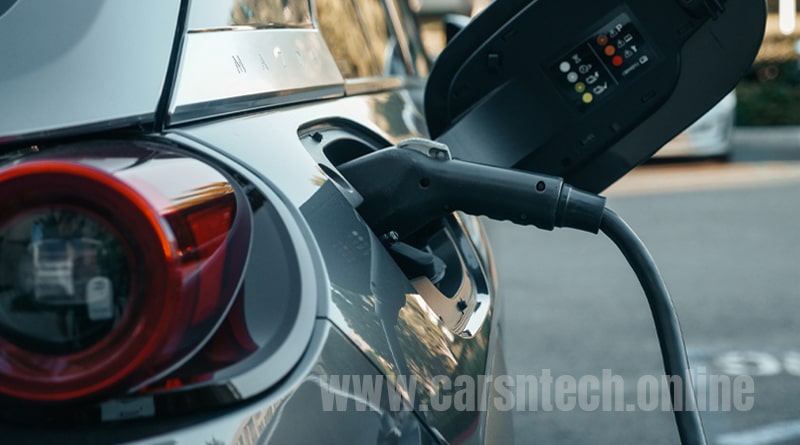The Influence of Temperature on Electric Vehicle Range: Exploring the Extremes
Electric vehicles (EVs) have been gaining significant attention as eco-friendly alternatives to traditional gasoline-powered cars. As companies explore the benefits of integrating EVs into their fleets, one crucial aspect to consider is the impact of temperature on the range these vehicles can achieve. In this article, we delve into the intricate relationship between temperature and EV range, shedding light on how various climatic conditions affect an EV’s performance.
Understanding EV Range
Range refers to the distance an EV can travel on a single charge. While manufacturers provide standardized range estimates, real-world conditions often lead to variations. Similar to gasoline cars, EVs’ actual range is influenced by factors like terrain, passenger load, driving speed, driver behavior, and outdoor temperature. These elements collectively affect the vehicle’s fuel economy and subsequently its range.
The energy capacity of an EV’s battery pack plays a significant role in determining its range. However, the vehicle’s design and external conditions also play a role. For instance, while a larger battery allows for a longer range, factors like weight, shape, and size influence the overall fuel efficiency. Interestingly, external conditions, such as abrupt acceleration or extreme temperatures, can impact fuel economy, regardless of the vehicle’s power source.
Electric Vehicles in Cold Weather
Historically, concerns were raised about the performance of EVs in cold weather. While opinions may vary, it’s undeniable that temperature has an impact on EV range. The day-to-day range is influenced by temperature due to auxiliary systems like heating and cooling. Apart from powering the vehicle itself, the battery also supports other functions, including regulating cabin and battery temperatures.
Contrary to popular belief, the loss of range in cold temperatures isn’t solely due to reduced battery performance. While cold temperatures can affect lithium-ion batteries’ energy storage capacity, the primary impact on the range is from the auxiliary load. Automakers have implemented battery thermal management systems to optimize performance, reducing battery-related losses.
The Temperature-Range Relationship
To gain a comprehensive understanding of how temperature affects EV range, Geotab conducted an analysis based on data from 5.2 million trips taken by 4,200 EVs across various makes and models. The findings revealed several key insights:
- Temperature Universality: Most EVs exhibit similar temperature-range curves, regardless of their make or model. Both cold and hot temperatures influence range, with colder climates having a more substantial impact.
- Optimal Temperature: The sweet spot for vehicle trip efficiency is around 70°F (21.5°C). At this temperature, EVs often outperform their rated range, reaching up to 115%.
- Extreme Temperature Impact: As temperature deviates from the optimal range, range loss becomes evident. At a frigid 5°F (-15°C), EVs can experience a reduction to 54% of their rated range.
Interestingly, heat also affects range, although not as drastically as extreme cold. The analysis indicates that EVs are generally more sensitive to temperature changes below the optimal range.
Strategies for Extending EV Range
Considering the temperature-range relationship, adopting certain strategies can help maximize EV range:
- Utilize Amenities Wisely: Instead of heating or cooling the entire cabin, focus on heated seats and steering wheels, which are more energy-efficient.
- Pre-Conditioning: Warm up or cool down your EV before driving to reduce the impact of extreme temperatures on battery efficiency.
- Keep Vehicle Plugged In: During extreme weather, keep your EV plugged in when not in use to maintain battery temperature controls.
- Drive Conservatively: Smooth driving, avoiding excessive acceleration and braking, can contribute to improved mileage range.
- Eco Mode: Use the eco mode to enhance energy efficiency by reducing power consumption and optimizing various features.
- Monitor Tire Pressure: Regularly check tire pressure, especially during temperature fluctuations, to minimize rolling resistance.
- Plan Charging Stops: Cold temperatures can slow down charging, so knowing the locations of fast chargers is essential for longer trips.
Insights for Fleets
As fleet electrification gains traction, understanding EV range in various temperatures becomes crucial. Fleets can gather and evaluate telematics data to determine the right EVs for their needs. Conducting an EV Suitability Assessment helps identify suitable vehicles based on operational and financial requirements, considering worst-case temperature scenarios.
In conclusion, temperature plays a significant role in determining EV range. Cold and hot temperatures impact efficiency, with the optimal range occurring around 70°F. By adopting effective strategies, such as prudent use of amenities and eco mode, fleet managers and EV owners can optimize their vehicles’ performance regardless of external conditions.

